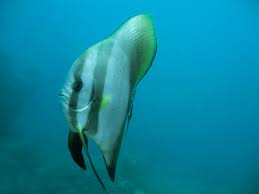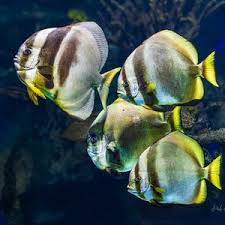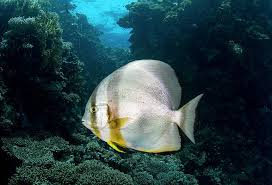The Image of the Dragon in Traditional Chinese Home Decorations

The dragon, a revered and potent symbol in Chinese culture, has been an integral part of Chinese art, mythology, and tradition for millennia. Known for its power, wisdom, and auspicious qualities, the dragon is deeply embedded in the aesthetic and spiritual fabric of traditional Chinese society. In ancient Chinese homes, the dragon was not merely a decoration but a symbol of protection, prosperity, and good fortune. It appeared in a variety of forms across different elements of home décor, from the furniture and textiles to architectural details and ornamental art.
In this article, we will explore the significance of the dragon in traditional Chinese home decorations, examining how its image was utilized in various aspects of interior design and what it represents in the cultural context of Chinese society. The following sections will delve into the role of the dragon in art, architecture, furniture, textiles, and other elements of home décor in ancient Chinese homes.
1. The Symbolism of the Dragon in Chinese Culture
Before delving into the role of the dragon in home décor, it is important to understand its symbolism in Chinese culture. The dragon holds a unique and sacred place in Chinese mythology and is often associated with power, wealth, and prosperity. It is believed to be a celestial being that has control over natural forces, including water, rain, and the weather. In traditional Chinese beliefs, the dragon is a symbol of good luck and is often invoked to ensure success and happiness.
The dragon is also closely associated with imperial authority, as it was considered the symbol of the emperor. The “Dragon Throne” was a term used for the throne of Chinese emperors, and the emperor himself was often referred to as the “Son of the Dragon.” Dragons are also seen as protectors, warding off evil spirits and ensuring the well-being of the household. This protective nature of the dragon is one of the key reasons it was widely featured in traditional Chinese home décor.
2. The Dragon in Chinese Architecture
Chinese architecture, particularly in historical homes, often incorporated the image of the dragon as part of the design, especially in the palaces and residences of the elite and imperial families. Dragons were carved into wooden beams, doors, window frames, and decorative eaves. In these settings, dragons were not only symbols of status but also played a role in the protection and prosperity of the household.
2.1. Roof Decorations and Eaves
One of the most iconic features of traditional Chinese homes, particularly those of the aristocracy and royal families, is the ornate roof decorations. The ridge of the roof often featured dragon motifs, which were believed to protect the building from natural disasters and evil spirits. These dragons were usually designed in intricate patterns and were considered an essential element of a home’s architectural grandeur.
The most famous of these architectural dragon representations can be seen in the Forbidden City, where golden dragons are prominently displayed. These dragons, often crafted from wood and gilded with gold, were thought to bring good fortune and ensure harmony and stability within the imperial palace.
2.2. Carved Wooden Beams and Columns
Inside traditional Chinese homes, particularly in the homes of the wealthy or elite, wooden beams and columns were often intricately carved with dragon imagery. These carvings, which could be found in the main halls or living areas, were intended to symbolize the power and auspiciousness of the dragon. The presence of such dragon carvings was believed to enhance the energy flow and provide spiritual protection to the residents.
Wooden columns and beams adorned with dragon motifs also served to establish the grandeur and status of the homeowner. The dragon was considered an imperial symbol, and the carving of dragons in one’s home was a way to align oneself with the authority and protection associated with the emperor.
3. The Dragon in Traditional Chinese Furniture
Furniture in traditional Chinese homes, particularly that of the aristocracy, was often ornately decorated with dragon motifs. The dragon’s image could be found on wooden chairs, tables, cabinets, and screens, and was used to symbolize wealth, power, and good fortune.
3.1. Dragon Chairs and Thrones
In ancient China, dragon motifs were often used to embellish furniture, especially thrones or chairs used by high-ranking individuals. The dragon was a symbol of imperial authority, so furniture adorned with dragon motifs was a way to project status and power. The dragon throne, often reserved for the emperor, was especially significant. The seat was not just a symbol of authority; it also represented the emperor’s connection to celestial power.
In more common households, dragon motifs could be found on chairs, tables, and other furniture. These designs were typically used to attract good luck and prosperity, and the presence of a dragon on a piece of furniture was considered auspicious. Dragon motifs on furniture also reflected the artistry and craftsmanship of Chinese artisans, as these designs often featured intricate carving and fine detailing.
3.2. Dragon-Embroidered Cushions and Upholstery
In addition to carved furniture, textiles also played a significant role in the incorporation of dragon imagery in Chinese homes. Dragon-embroidered cushions, upholstery, and coverings were common in affluent households. These embroidered textiles were typically made from silk and were often used on chairs, sofas, or beds. The intricate patterns of the dragon on these textiles symbolized the presence of power and good fortune.
The act of embroidering dragons on textiles was not merely an artistic choice; it was also a spiritual practice. The dragon’s presence in the home through textiles was thought to ensure the household’s prosperity and protect it from harm. Silk dragon embroidery, in particular, was highly prized and often given as gifts during important celebrations or ceremonies.
4. The Dragon in Chinese Ceramics and Porcelain
Ceramics and porcelain have a long history in Chinese culture, and the dragon is one of the most popular motifs in traditional Chinese pottery. The image of the dragon was often painted or carved onto vases, plates, bowls, and other ceramic pieces.
4.1. Dragon Motifs on Porcelain Vases
In traditional Chinese homes, porcelain vases featuring dragon imagery were common. These vases were often placed in prominent areas of the home to bring good fortune and protect the household. The dragon motif on these vases was typically paired with other auspicious symbols, such as the phoenix or the lotus, to amplify the positive energy.
Porcelain vases decorated with dragons were considered valuable heirlooms and were often passed down from generation to generation. They were used not only for their decorative beauty but also for their symbolic protection and influence on the household’s prosperity.
4.2. Dragon Plates and Bowls
In addition to vases, plates, bowls, and serving dishes often featured dragon motifs. These ceramics were used in daily life and at special occasions, such as weddings and family gatherings. The presence of the dragon on these items was believed to invite good fortune into the home, especially during important meals or celebrations.
5. The Dragon in Wall Hangings and Art
In traditional Chinese homes, wall hangings and paintings featuring the dragon were common. These pieces of art were often displayed in the main living areas of the house to enhance the energy flow and attract auspiciousness.
5.1. Dragon Paintings
Paintings of dragons, often done in traditional ink and watercolor styles, were commonly displayed on the walls of Chinese homes. These paintings were carefully crafted by skilled artisans and were sometimes commissioned by wealthy families. The dragon painting would usually feature the dragon surrounded by other symbols of power, such as clouds, fire, or waves.
These paintings were believed to harness the dragon’s energy and bring prosperity, protection, and vitality to the home. They were often placed in the main hall or living room, where they could be admired and where they would have the greatest impact on the household’s energy.
5.2. Dragon Wall Hangings
In addition to paintings, wall hangings featuring dragon symbols were often made from silk or brocade fabric. These hangings were particularly popular during the Qing Dynasty and were often used in ceremonial spaces, such as the living room or the dining hall. The wall hangings depicted dragons in various poses and settings, from flying through the clouds to swimming in rivers. These depictions reinforced the belief in the dragon’s power and benevolent influence on the household.
6. The Dragon and Its Cultural Influence on Interior Design
The use of the dragon in traditional Chinese home décor transcended mere aesthetics. It was deeply tied to the cultural and spiritual beliefs of the time, with the image of the dragon acting as both a symbol of power and a protective force. The incorporation of dragon motifs in the architecture, furniture, textiles, and ceramics of ancient Chinese homes served to attract good fortune, ward off evil, and establish the status and identity of the household.
Today, the legacy of the dragon continues to influence modern Chinese interior design. While the design elements have evolved, the dragon remains a potent symbol of good luck, protection, and prosperity. Whether through intricate carvings, embroidered textiles, or porcelain vases, the image of the dragon remains a central element in traditional Chinese décor, representing a connection to both the past and the divine.
Conclusion
The dragon is a symbol of immense significance in Chinese culture, and its presence in traditional Chinese home décor reflects the cultural values of strength, protection, and prosperity. Through intricate carvings, decorative textiles, ceramics, and artwork, the dragon’s image continues to play an essential role in the design and symbolism of Chinese interiors. By embracing the dragon in their homes, Chinese families were not only showcasing their artistic prowess but also inviting auspicious energies into their lives, ensuring that their households were blessed with health, wealth, and harmony for generations to come.








